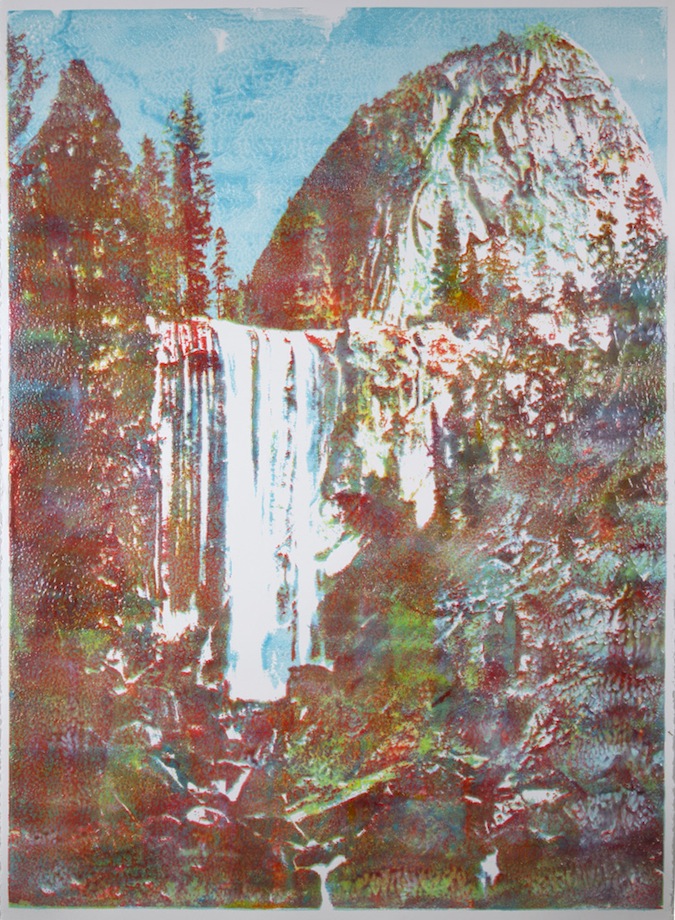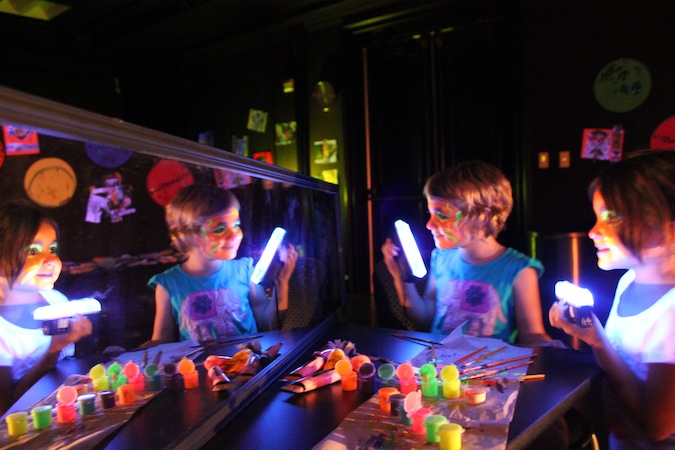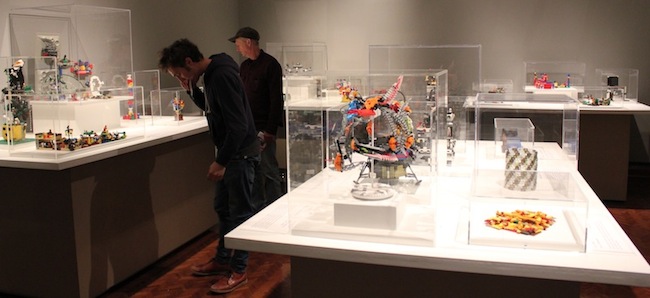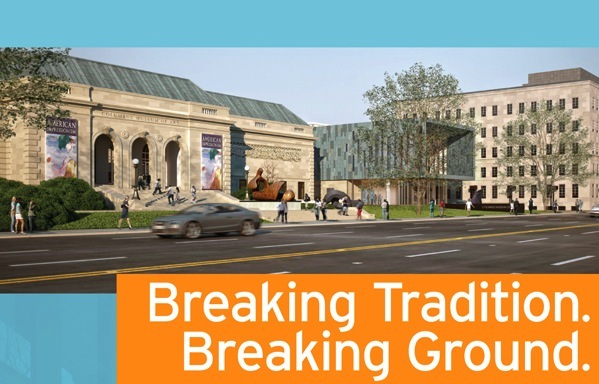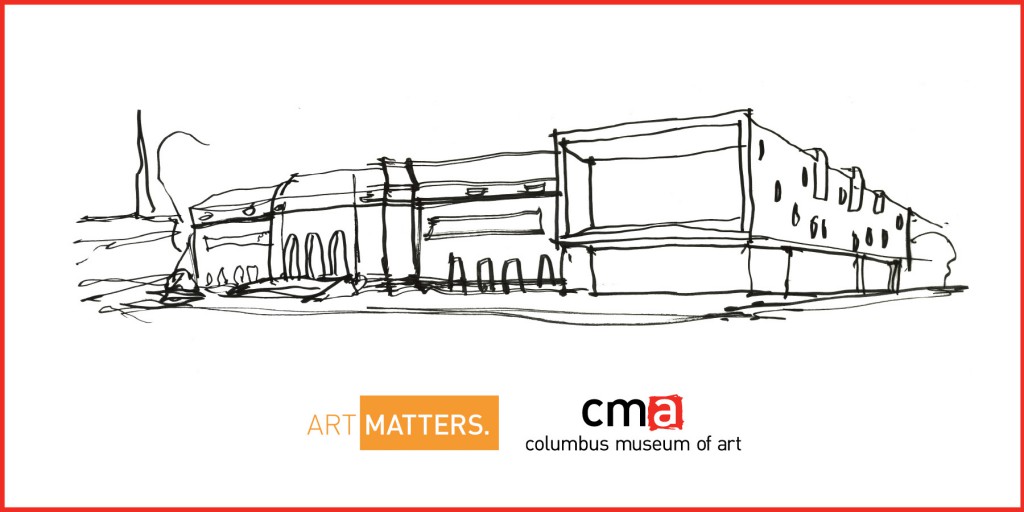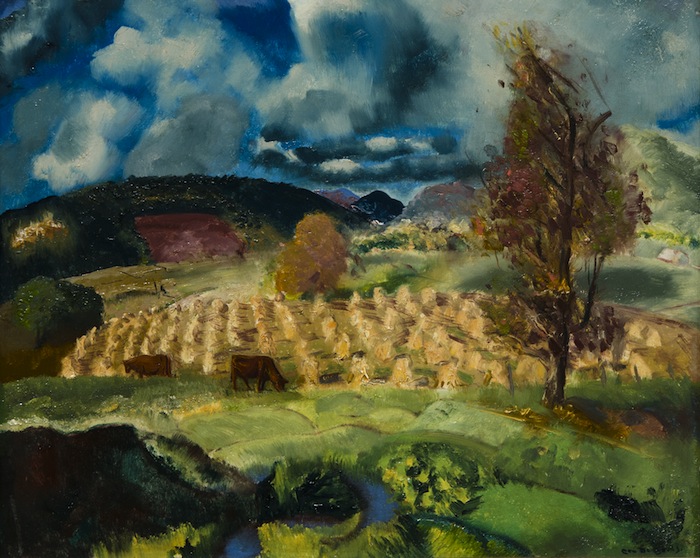
Our annual symposium on American art, inspired by the Museum’s acquisition of the Philip and Suzanne Schiller Collection of American Social Commentary Art 1930–1970, attracts top scholars from around the world. Each year the symposium focuses on a particular theme. This year in conjunction with our George Bellows and the American Experience exhibition, we focus on groundbreaking American painter George Bellows, a Columbus native. The symposium takes place November 7–9, 2013, and also includes the Keith and Nadine Pierce Annual Lecture in American Art featuring music from Bellows’ time, and our annual Cunningham lecture, Reviewing George Bellows: The Critical Response with Charles Brock, Associate Curator of American and British Paintings, National Gallery of Art, Washington, D.C.
Admission to the symposium is $40 for CMA members, $80 for non-members, and free to students. Registration is not required, but is highly recommended. Art of Concern Tickets here or, call (614) 629-0359 with your credit card information.
This symposium is made possible through support from the Terra Foundation for American Art.

Art of Concern Schedule
George and Emma Bellows: The Music in their Lives
The Keith and Nadine Pierce Annual Lecture in American Art
November 7, 7:00 PM
Pianist Leslie Amper is the featured performer for this year’s Keith and Nadine Annual Lecture in American Art. During an invigorating musical performance, Amper will offer a slice of the soundtrack to George Bellows’ era. In conjunction with CMA’s exhibition of the works of the American painter and our symposium focusing on the artist’s concerns, the performance by Amper will feature music from the first quarter of the 20th century when George Bellows was active. Selections by George Gershwin, who knew the couple, Chopin, and Charles Ives will also be featured. A conversation about music in the lives of the Bellows family and a screening of D.W. Griffiths silent film New York Hat with live accompaniment will follow the performance.
Thanks to the generosity of Keith and Nadine Pierce, this performance is free and open to the public. All are welcome and registration is requested. Please call 614.629.0359 to reserve your seat.
Friday, November 8
9:00 – 10:00 Coffee and Registration
10:00 – 10:15 Introduction
Nannette V. Maciejunes, Executive Director, Columbus Museum of Art
Melissa Wolfe, Curator of American Art, Columbus Museum of Art
10:15 – 10:45 Cunningham Lecture Reviewing George Bellows: The Critical Response
Charles Brock, Associate Curator of American and British Paintings, National Gallery of Art, Washington, D.C.
10:45 – 11:00 Audience Q&A
11:00 – 11:30 Canonizing George Bellows, “The Fair-Haired Boy of American Art”
Randall Griffey, Associate Curator of Modern American Art, Metropolitan Museum of Art, New York
11:30 – 12:00 Audience Q&A
12:00 – 1:30 Lunch
1:30 – 2:00 Bellows – Hopper: Crossed Destiny
Didier Ottinger, Deputy Director of the National Centre for Art and Culture Georges Pompidou, National Museum of Modern Art, Paris, France
2:00 – 2:15 Audience Q&A
2:15 – 2:45 George Bellows’s Blues (and other Colors)
Douglas Tallack, Professor of American Studies and Vice-President (International), University of Leicester, United Kingdom
2:45 – 3:00 Audience Q&A
3:00 – 5:00 Open Discussion, George Bellows and the American Experience Galleries
Melissa Wolfe, Curator of American Art, Columbus Museum of Art, Ohio
Saturday, November 9
9:00 – 10:00 Coffee and Registration
10:00 – 10:30 Abjection and Violence in Bellows’s Ashcan Painting
David Peters Corbett, Professor of Art History and American Studies, University of East Anglia, Norwich, United Kingdom
10:30 – 10:45 Audience Q&A
10:45 – 11:15 The Sound of Saving Souls: George Bellows, Billy Sunday, and Religious Hyperbole
Leo Mazow, Associate Professor of Art History, University of Arkansas, Fayetteville
11:15 – 11:30 Audience Q&A
11:30 – 12:00 George Bellows and the Complication of Race
Martin Berger, Professor of History of Art and Visual Culture, University of California, Santa Cruz
12:00 – 12:15 Audience Q&A
12:15 – 1:30 Lunch
1:30 – 2:00 George Bellows and Hugo Reisinger: A Study of Patronage
Suzanne Scharf, Doctoral Candidate, Goethe University, Frankfurt, Germany
2:00 – 2:15 Audience Q&A
2:15 – 2:45 From Realism to Idealism: Bellows Goes to War
David Lubin, Charlotte C. Weber Professor of Art, Wake Forest University, Winston-Salem, North Carolina
2:45 – 3:00 Audience Q&A
3:00 – 3:30 Fraternal Hazing and other Violent Rituals
John Fagg, Professor of American and Canadian Studies, University of Birmingham, United Kingdom
3:30 – 3:45 Audience Q&A
3:45 – 4:00 Closing Remarks
Melissa Wolfe, Curator of American Art, Columbus Museum of Art
Can’t make the symposium? Watch it live here starting at 10 AM November 8 and November 9.
Speaker Biographies:
Leslie Amper studied at Oberlin College and with Russell Sherman at New England Conservatory. Currently, she teaches at Wheaton College, New England Conservatory Preparatory and Longy School of Music of Bard College. A winner of the National Endowment for the Arts Solo Recitalist Fellowship Grant, Ms. Amper has been invited to perform on Monadnock Music’s Virtuoso Piano Series, Emmanuel Music solo and chamber music celebrations of Schumann, Beethoven, and Harbison, Pittsburgh Symphony Concerts at the Point, Friday Musicale of Jacksonville, Florida, New Hampshire Music Festival, Harvard University’s Fromm Music Foundation Concerts, as well as in London, England, Strada Italy, and Modling Austria. A member of the Jubilee Trio and the Alcyon Chamber Ensemble, she has recorded for Brave and Neuma Records; her recording of Andrew Imbrie’s Short Story was selected for the international radio broadcast “Art of the States.” Ms. Amper toured the United States with her lecture/piano recital related the Smithsonian American Art Museum’s Exhibition 1934: A New Deal for Artists. Other lecture/recitals related to art exhibitions have been presented at the National Gallery of Art (Cine-Concert in honor of George Bellows), The Phoenix Art Museum (Multiples in French Painting from David to Matisse), and The Frick Art and Historical Society (Off the Pedestal: New Women in the Art of Homer, Chase, and Sargent), and the Museum of Fine Arts Boston (The Sound of Color: Debussy and the Visual Arts; Ann Allen lecturer). Leslie Amper was invited by the cutting edge theater director Peter Sellars to be an onstage pianist playing Scriabin in his American National Theater production in Washington, D.C. of Chekhovʼs A Seagull.
Martin A. Berger is professor of History of Art and Visual Culture and the founding director of the Visual Studies graduate program at the University of California at Santa Cruz. He graduated from Wesleyan University in 1987 with a B.A. in English and Art History. He received his Ph.D. in American Studies from Yale University in 1995. Professor Berger has held fellowships at the Smithsonian Institution, Stanford Humanities Center, and the Sterling and Francine Clark Art Institute. He is the author of Man Made: Thomas Eakins and the Construction of Gilded Age Manhood (2000), Sight Unseen: Whiteness and American Visual Culture (2005), and Seeing through Race: A Reinterpretation of Civil Rights Photography (2011). His exhibition catalogue, Freedom Now! Forgotten Photographs of the Civil Rights Struggle, will be published this fall.
Charles Brock is associate curator of American and British paintings at the National Gallery of Art in Washington and was the organizing curator for the recent George Bellows retrospective. For over two decades Mr. Brock has contributed to the Gallery’s national and international exhibitions of American and British art. The list begins in the early 1990s with the major retrospectives James McNeill Whistler (seen at Tate Gallery in 1994) and Winslow Homer (1995). From 1996 to 2002 Brock served as research associate in the National Gallery’s department of photographs where he collaborated with Sarah Greenough on the landmark exhibition Modern Art in America: Alfred Stieglitz and His New York Galleries (2001). After returning to the department of American and British paintings Brock curated Across Media in 2006, a critically acclaimed show on the early American modernist painter, photographer, and filmmaker, Charles Sheeler. First-generation American modernists have been the primary focus of Brock’s scholarship. In addition to his work on Bellows and Sheeler, he has contributed to numerous other publications devoted to the early American avant-garde including The Eye of Duncan Phillips: A Collection in the Making (The Phillips Collection, 1999), Twentieth-Century American Art: The Ebsworth Collection (2000), A Century of Drawing: Works on Paper from Degas to LeWitt (2001), Eye Contact: Modern American Portraits from the National Portrait Gallery (2002), and American Modernism: The Shein Collection (2009).
David Peters Corbett is Professor of Art History and American Studies. He has written widely on British and American painting between the mid-nineteenth and mid-twentieth centuries, most recently in An American Experiment: George Bellows and the Ashcan Painters (exhibition catalogue, National Gallery, London, 2011), in articles on Charles Sheeler in the Journal of American Studies (45:3) and on Frederic Church and Theodore Winthrop in The European Journal of American Culture (30:1), and, as co-editor with Dr. Sarah Monks (UEA), in Anglo-American: Artistic Relations between Britain and the US from Colonial Times to the Present, a special issue of the journal Art History (31:3). He is currently working on a book, ‘Urban Painting and the Landscape Tradition in America, 1850-1930’, which deals with the relationship between the mid-nineteenth century landscape tradition and the painting of the cities which came to form a central strand of US modernism later in the century.
John Fagg teaches in the Department of American and Canadian Studies at the University of Birmingham. His research focuses on processes of cultural change in American literature and visual art in the decades around 1900. He is the author of On the Cusp: Stephen Crane, George Bellows and Modernism (Tuscaloosa, 2009) and recent articles on Saturday Evening Post covers for American Art and the 1930s genre painting revival in The Space Between. He is currently working on a book on early twentieth century American genre painting.
Randall R. Griffey is Associate Curator of Modern American Art at the Metropolitan Museum of Art. He writes primarily on American painting from 1900 to 1945. Much of his work has focused on the painter and poet Marsden Hartley. In 2011, Griffey contributed “Reconsidering ‘The Soil’: The Stieglitz Circle, Regionalism, and Cultural Eugenics in the 1920s” to the catalogue accompanying the Brooklyn Museum’s traveling exhibition Youth and Beauty: Art of the American Twenties. From 2008 to 2012, Griffey served as Curator of American Art at the Mead Art Museum, Amherst College, Amherst, Massachusetts. Prior to Amherst, he was the Associate Curator of American Art at the Nelson-Atkins Museum of Art, Kansas City, Missouri.
David Lubin, the Charlotte C. Weber Professor of Art at Wake Forest University, is the author of several books, including Act of Portrayal: Eakins, Sargent, James; Picturing a Nation: Art and Social Change in Nineteenth-Century America; Titanic; and Shooting Kennedy: JFK and the Culture of Images, which won the 2004 Eldredge Prize from the Smithsonian American Art Museum for “distinguished scholarship in American art.” Growing up in Bexley, he was a frequent visitor to the Columbus Museum of Art.
Leo Mazow, a specialist in American art and cultural history, came to the University of Arkansas in 2010 after eight years as curator of American art at the Palmer Museum of Art at The Pennsylvania State University. Among the exhibitions and accompanying publications he organized are Taxing Visions: Financial Episodes in Late Nineteenth-Century American Art; Picturing the Banjo; Arneson and the Object; and Shallow Creek: Thomas Hart Benton and American Waterways. Dr. Mazow has published articles on Regionalism, New York Dada, and American landscape painting in such journals as Art Bulletin, American Art, and Winterthur Portfolio. His book, Thomas Hart Benton and the American Sound, published in Spring 2012 by Penn State University Press, was supported by a Wyeth Foundation for American Art Publication Grant, administered by the College Art Association, and by a senior fellowship at the Smithsonian American Art Museum. He presented a lecture on communication imagery in American art at the Musée du Louvre in February 2013. His current project is entitled Hopper’s Hotels: Edward Hopper and the Promise of American Mobility.
Dider Ottinger is the deputy director of the National Centre for Art and Culture Georges Pompidou, National Museum of Modern Art in Paris. He has published numerous works on artists such as Marcel Duchamp, Francis Picabia, Max Beckmann, Philip Guston, and Otto Dix. In 2005, he served as a guest curator at the Museum of Modern Art in New York, and in 2010 he was a Terra Foundation Senior Fellow. He has organized a wide variety of exhibitions in France and overseas, and his recent retrospective on Edward Hopper at the Galeries Nationales du Grand Palais received great critical and popular attention.
Susanne Scharf is a doctoral candidate at Goethe University, Frankfurt, Germany, from which she also received her M.A. in American studies and art history. She also holds a Diploma in American Studies from Smith College. From 2007 to 2009, she was assistant curator at the Bucerius Kunst Forum, Hamburg, where she helped to organize and contributed to the catalogues of the exhibitions “High Society: American Portraits of the Gilded Age” and “Modern Life: Edward Hopper and His Time.” Since 2010, she has worked as an assistant professor in the Departments of English and American Studies at Hamburg University and Goethe University, Frankfurt. In 2011, she held a Terra Foundation for American Art Predoctoral Fellowship at the Smithsonian American Art Museum in Washington, DC.
Douglas Tallack is Professor of American Studies and Vice-President (International) at the University of Leicester, UK. Professor Tallack formerly held similar posts at the University of Nottingham, UK, where he was responsible for its off-shore campuses in China and Malaysia. Professor Tallack’s books are: Global Cities/Local Sites (editor); New York Sights: Visualizing Old and New New York; City Sites: Multi-Media Essays on New York and Chicago (editor); Critical Theory: A Reader (editor); The Nineteenth-Century American Short Story: Language, Form and Ideology; Twentieth-Century America; and Literary Theory at Work (editor). He has twice won the Arthur Miller Prize for the best American Studies article of the year and co-directed the 3Cities project funded by the UK Arts and Humanities Research Council. He holds honorary guest professorships at Tsinghua University, Beijing, and Shanghai International Studies University, and was the Grolier Club (New York) Fellow (2008). Professor Tallack’s public service includes membership of the UK Government’s Marshall Commission, the Advisory Board of the Observatory for Borderless Education, the UK-China Task Force, the British Council Advisory Panel on UK/US Higher Education, various joint-venture boards, as well as local school and college governing bodies.
(Above: Cornfield and Harvest by George Bellows)
